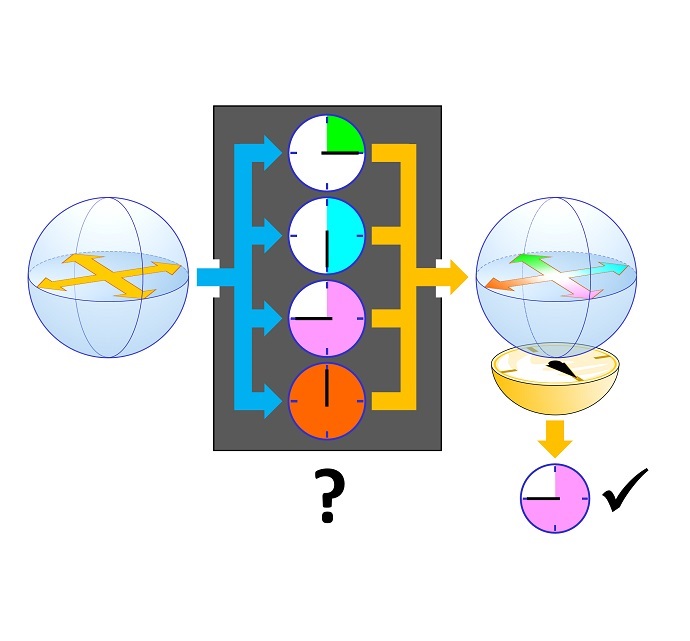April 21 2016
Quantum mechanics – the counter intuitive theory ruling the world of molecular, atomic and subatomic particles – is still incomprehensible to many of us. But our current understanding of quantum mechanics has delivered huge technological advances such as the microprocessor, the laser and imaging devices like the MRI scanner.
But how weird can quantum effects be and can we put such weirdness to good use? A team led by experts at The University of Nottingham has managed to simplify the problem of measuring quantum coherence – the quintessential signature of quantum mechanics. The potential impact of this research is the verification and development of new superfast advanced computers, more precise sensors for healthcare and navigation, and secure communication networks.
In a twin publication in Physical Review Letters and Physical Review A, they introduce a new way to quantify quantum coherence – the degree of superposition between classically distinct states. Their method captures the extent to which a system (such as an atom, or an electron, or even a biological organism) can live in a quantum superposition of being e.g. in two or more different locations, or with different energies. They then develop a new measurement procedure to work out how useful this can be in practical applications.
Uncovering the secrets of the quantum world
Dr Gerardo Adesso, from the School of Mathematics at The University of Nottingham, is leading a £1m European Research Council project to uncover more secrets of the mind-bending world of quantum systems, to speed up the development of quantum technologies of the future. These two research papers are some of the first hints at what this might lead to.
Dr Adesso and his co-authors wrote: “The realisation that quantum properties can be harnessed for practical applications is presently fuelling a heated international race to deploy quantum technologies. The improved comprehension of fundamental quantum properties and our increased ability to exploit them go hand in hand.”
This research, carried out in collaboration with the Università degli Studi di Salerno, Italy
University of Strathclyde, UK and Mount Allison University, Canada, has made it possible to ‘witness’ and ‘measure’ coherence effects more accessibly in experiments, even involving complex and living systems – for which quantum coherence may play a functional role, such as in photosynthesis or bird orientation.
The new ‘measure’, named “robustness of coherence”, captures on one hand how resilient quantum coherence is to the action of noise, and directly reveals on the other hand how more useful a quantum probe is - compared with any ‘classical’ one without coherence - for the practical task of phase discrimination, i.e. the ability to distinguish between unknown microscopic rotations applied to a probe in a black box.
The power behind quantum technologies
Quantum coherence or superposition is the most important resource behind a variety of quantum technologies including quantum cryptography and quantum metrology. It can also empower small-scale thermo-dynamical machines such as refrigerators or heat engines based on one or a bunch of atoms to push their performance beyond their classical limitations. It is the essential ingredient behind the power of quantum computers.
However, beyond qualitative evidence, so far there was no clear quantitative connection between the degree of coherence in a quantum state, and the direct performance of some quantum protocol. The researchers have bridged this gap by showing that the “robustness of coherence” quantifies exactly the quantum advantage in the phase discrimination task (see also the accompanying blog post for more details).
Dr Adesso said: “This task is central for the upcoming wave of quantum technologies, specifically metrological applications and the design of ultraprecise sensors such as clocks, magnetometers, accelerometers and interferometers. By pinning down precisely the resource behind the power of such technologies we put quantum weirdness on firm grounds and to a very good use.”















